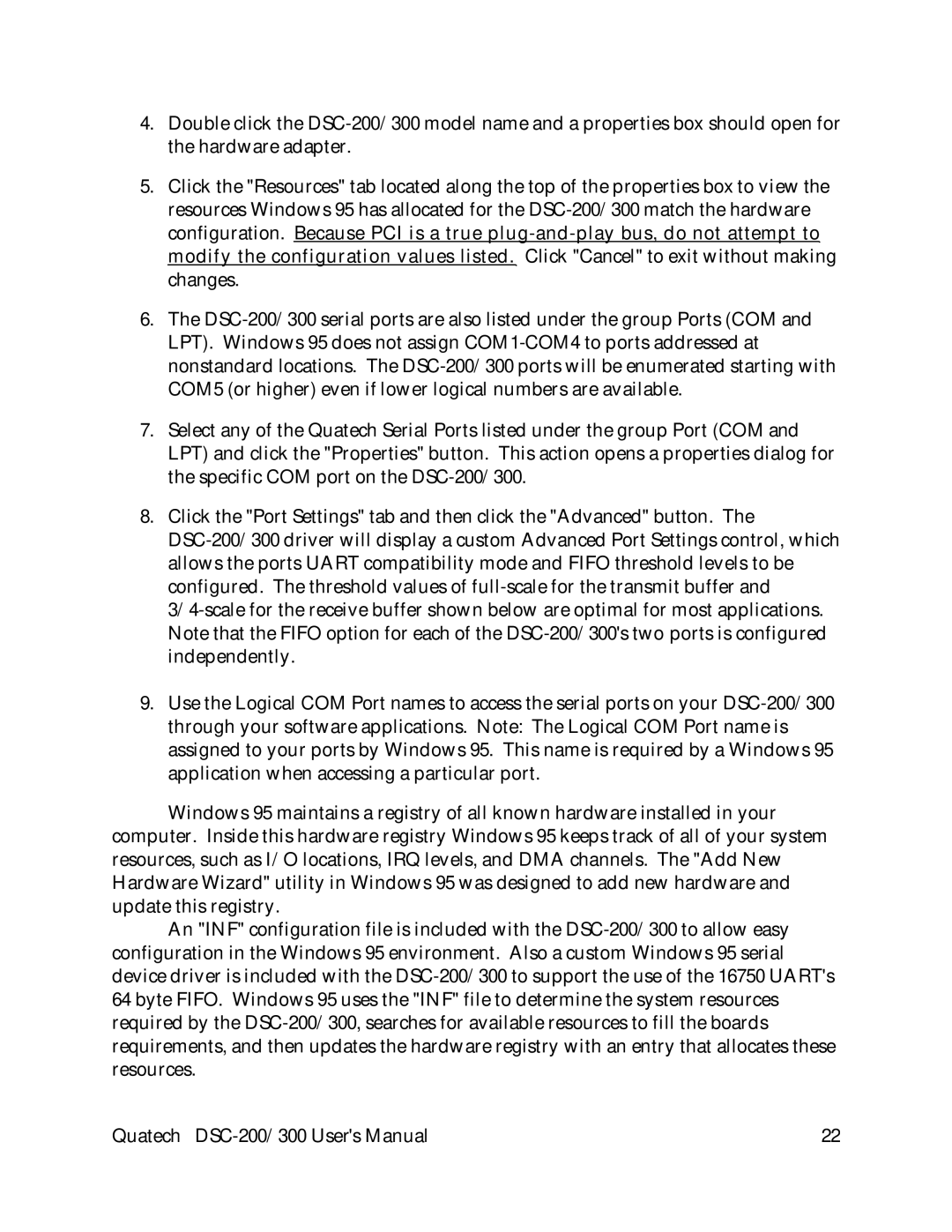4.Double click the DSC-200/300 model name and a properties box should open for the hardware adapter.
5.Click the "Resources" tab located along the top of the properties box to view the resources Windows 95 has allocated for the DSC-200/300 match the hardware configuration. Because PCI is a true plug-and-play bus, do not attempt to modify the configuration values listed. Click "Cancel" to exit without making changes.
6.The DSC-200/300 serial ports are also listed under the group Ports (COM and LPT). Windows 95 does not assign COM1-COM4 to ports addressed at nonstandard locations. The DSC-200/300 ports will be enumerated starting with COM5 (or higher) even if lower logical numbers are available.
7.Select any of the Quatech Serial Ports listed under the group Port (COM and LPT) and click the "Properties" button. This action opens a properties dialog for the specific COM port on the DSC-200/300.
8.Click the "Port Settings" tab and then click the "Advanced" button. The DSC-200/300 driver will display a custom Advanced Port Settings control, which allows the ports UART compatibility mode and FIFO threshold levels to be configured. The threshold values of full-scale for the transmit buffer and 3/4-scale for the receive buffer shown below are optimal for most applications. Note that the FIFO option for each of the DSC-200/300's two ports is configured independently.
9.Use the Logical COM Port names to access the serial ports on your DSC-200/300 through your software applications. Note: The Logical COM Port name is assigned to your ports by Windows 95. This name is required by a Windows 95 application when accessing a particular port.
Windows 95 maintains a registry of all known hardware installed in your computer. Inside this hardware registry Windows 95 keeps track of all of your system resources, such as I/O locations, IRQ levels, and DMA channels. The "Add New Hardware Wizard" utility in Windows 95 was designed to add new hardware and update this registry.
An "INF" configuration file is included with the DSC-200/300 to allow easy configuration in the Windows 95 environment. Also a custom Windows 95 serial device driver is included with the DSC-200/300 to support the use of the 16750 UART's 64 byte FIFO. Windows 95 uses the "INF" file to determine the system resources required by the DSC-200/300, searches for available resources to fill the boards requirements, and then updates the hardware registry with an entry that allocates these resources.
